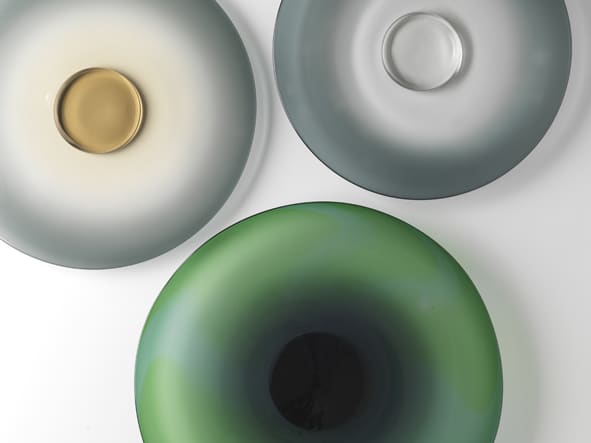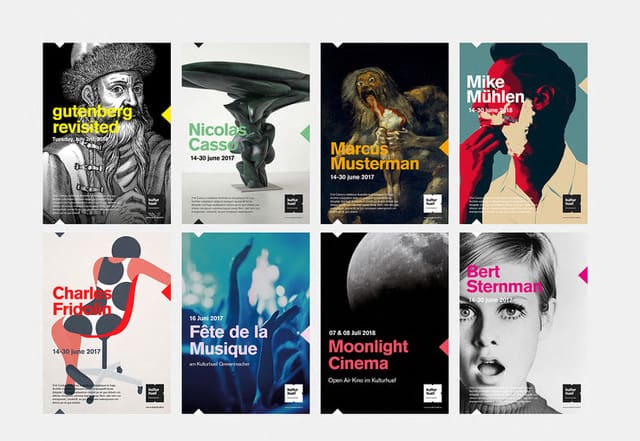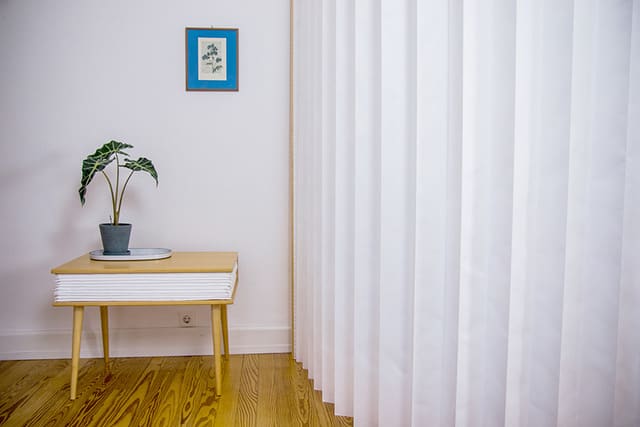
Design
Design in Luxembourg
Aesthetic creation or strategic tool, the often versatile notion of “design” pursues these objectives in turn or jointly, while remaining above all a vector of innovation. Of hybrid and multidisciplinary essence, design affects both the culture and the economy on which it depends.
In recent years, the Luxembourg design sector has experienced remarkable development in terms of growth and professional positioning. In 2017, the Creative Industries Cluster was founded as a grouping bringing together the country’s entire ecosystem of companies operating in the creative industries. It caters for 12 branches of the creative industries, including design, fashion and crafts. By pursuing its mission of providing information, promoting creatives’ work and fostering synergies between them, this cluster offers solid foundations for the growth of these trades. What is more, its virtual platform, creativecluster.lu, offers (inter)national-level visibility for the creatives featured on it.
The design sector revolves around into various disciplines such as product, service, fashion or photography. The graphic branch in its broader sense – traditionally, the best represented in the Grand Duchy – works hand in hand with illustration, web design, animation and motion design, to name but the most common connections. That is why the sector needs a body like the professional federation Design Luxembourg, which can bring together these threads – which appear, at first glance, quite disparate – and offer them all support. Design Luxembourg has a specific purpose: making political, business and cultural decision-makers as aware as possible of designers and their territorial skills. That involves the recognition of design as a key driver of the country’s economic growth and sustainable development. Every two years, Design Luxembourg organises the Luxembourg Design Awards. This contest, which spotlights Luxembourg’s best design work, complements the Media Awards dedicated to creativity in advertising, which
the publisher Maison Moderne and broadcaster RTL, hold.
Cultural development
Under the leadership of Marie-Claude Beaud, former Director of Mudam (the Contemporary Art Museum of Luxembourg), real thought was given, right from the concept stage, to the creative aspect of design in the context of the museum. One example of this is that designers, including Ronan and Erwan Bouroullec, Charles Kaisin, Konstantin Grcic and Nitzan Cohen, were brought in to create the furniture for the museum’s various spaces before it opened in 2006. All these pieces now form part of the Mudam collection.
In addition to that is the stated desire to include design in Mudam’s programme of events, which has made the museum an important catalyst for the development of design culture in Luxembourg. Since the creation of the non-profit Design Friends in 2009, the museum has supported it by hosting its programme of conferences and other networking events. Design Friends quickly became one of the leading platforms in this area, in terms of the quality of the events run – with over 50 international designers guesting to date – and of its work promoting the local scene. The events side is complemented with highly curated publishing that contributes to raising awareness of design among the general public, bringing together both professionals and amateurs, both knowledgeable and casual.
In 2010, Mudam worked with the Municipality of Luxembourg City to set up the Design City festival, which was put on every two years from 2010 to 2018. This flagship event for the sector interwove work by local and international designers at exhibitions, urban installations, workshops and other events bringing creatives together. And, the programme was opened up to other cultural institutions and even shops in Luxembourg City.
Among the events and other highlights of this pivotal period were the Colophon festival (2007 and 2009) dedicated to independent magazines; the Tomorrow Now – When Design Meets Science Fiction exhibition at Mudam (2007); the Resolute – Design Changes exhibition at Casino Luxembourg (2015), in partnership with the Graphic Design festival of Breda, Netherlands; the Local Craft Meets Design exhibition (2016), organised at Cercle Cité by the non-profit In progress; and The Open End, a collaborative festival dedicated to graphic design (at Kulturfabrik, Esch-sur-Alzette, in 2016, and at Rotondes, Luxembourg City, in 2019). Autoreverse (2004-2005) by Paul Kirps was incorporated into the design collection of New York’s Museum of Modern Art, and was part of the Rough Cut: Design Takes a Sharp Edge exhibition in 2008.
Master artisanship and crafts have been brought into the spotlight, thanks to the commitment of the De Mains de Maîtres Luxembourg association, which has been holding an eponymous biennale since 2016. This discipline has even been exported abroad: with a Luxembourg presence at the Grand Palais, Paris, particular ly on the occasion of the Révélations International Biennale of Crafts and Creation.
Museum collections
Although master artisanship, the decorative arts and the graphic arts have a prominent place in the collections of Luxembourg museums, Mudam and the National Museum of History and Art (MNHA) also own some works of contemporary (national and international) design.
On top of the furniture ordered for Mudam that has now made its way into the museum’s collection, it now houses some 20 pieces by international designers, such as Patrick Jouin, Laurent Massaloux, Maarten Baas, Ora-Ïto and Peter Newman. In addition to those, there are 36 fashion creations, by designers such as Hussein Chalayan, Hiroaki Ohya, Martin Margiela and Walter van Beirendonck. An early-1930s work by Alvar and Aino Aalto completes the set.
As for the MNHA, its interest in contemporary design is driven by a desire to place its acquisitions – which are few but very specific – in their historical context. For example, the MNHA has acquired the deckchairs originally created by Georges Zigrand for the Justus Lipsius building, Brussels, to mark the 2015 Luxembourg Presidency of the Council of the European Union.

Abroad
It is not unusual for Luxembourg design to attract the attention of international experts, or even for the country’s creators to land prizes in prestigious competitions. The graphic design agencies A Designers’ Collective, cropmark, kontext, ID+P, Rose de Claire design and Quattro Creative all won prizes at the 2020 German Design Awards. The agencies Dubl Design Studio and Claudia Eustergerling Design won two prizes each at the DNA Paris Design Awards in the same year. As for Luci magazine, produced by the agency ampersand.studio for Luxembourg for Tourism, it picked up a Red Dot Design Award, a German Design Award, a C²A Creative Communication Award and ICMA – International Creative Media Award.
In the field of fashion, Jil Jander, a young creator, freshly qualified from the Ecole cantonale d'art de Lausanne (ECAL), made it through to the final round of the Fashion Accessories Competition at the 2020 Hyères Festival.
While the Luxembourg context certainly makes it possible to work as a designer, the international scene has in its ranks a few prominent figures from the Grand Duchy. One example is the prolific Max Steffen, who works as Design Director for Equipment and Accessories at The North Face, in the US. Another talent is Christophe de la Fontaine, who started his career by joining the studio of Patricia Urquiola, and has also worked for Moroso and Rosenthal. Since 2012, he has been working with artist Aylin Langreuter at their company DANTE – Goods And Bads. Lastly, designer Dunja Weber earned her stripes at Cassina and with Italian designers Marco Ferreri and Stefano Giovannoni, before joining James Irvine’s studio. Specialising in furniture, she now works in Luxembourg.

Education
In Luxembourg, higher-level education relating to design is concentrated in two establishments: the Lycée des Arts et Métiers (School of Arts and Crafts) and the University of Luxembourg. The Lycée des Arts et Métiers offers several higher-education technical diplomas (BTSs) including game art and game design, and graphic design. As for the University of Luxembourg, its courses include a Bachelor’s in Animation and a Master’s in Architecture.
Opened in 2021, Casino Display (formerly Konschthaus Beim Engel, the programme of which is now run by Casino Luxembourg – Forum d'art contemporain) offers guidance and advice to students interested in pursuing a career in the creative industries. At display.ed, an annual forum for meetings and discussions, representatives from schools of art, design and architecture in Luxembourg and its neighbouring regions meet to present a selection of their curricula and courses.
Nadine Clemens
Head of Communication and Press at Casino Luxembourg – Forum d’art contemporain
This text was written in April 2021 and offers an overview of design in Luxembourg over the last 15 years. There is no institution in Luxembourg dedicated exclusively to design.



